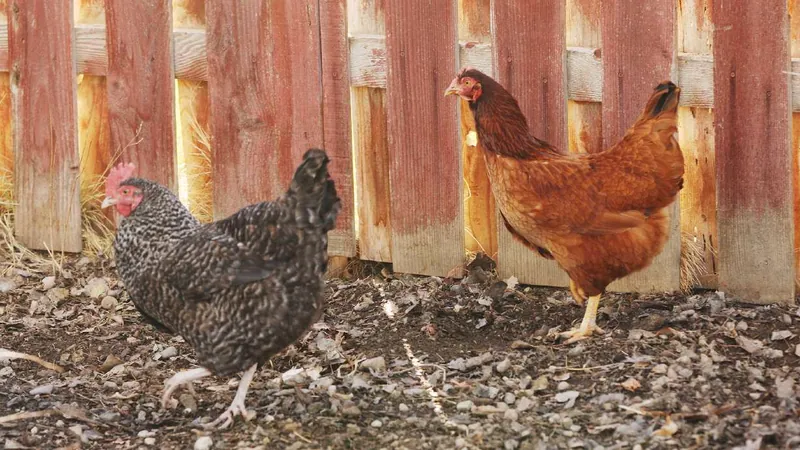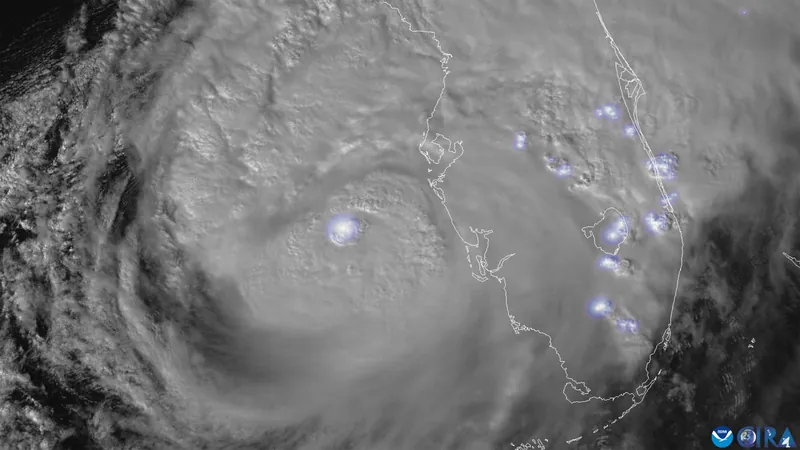
Avian Flu Outbreak in Utah Leads to the Culling of Over 100,000 Poultry: What You Need to Know
2024-11-22
Author: Ying
Avian Flu Outbreak in Utah
The avian flu crisis in Utah has escalated dramatically, with authorities confirming the culling of over 100,000 chickens and turkeys following the detection of new cases. This rapid response is primarily due to an outbreak in a backyard flock in Salt Lake County and several commercial farms in south-central Utah.
Recent Infections and Actions Taken
Most of the new infections were identified at three turkey farms in Piute County. Between November 10 and Tuesday, an alarming 107,800 turkeys were killed to prevent further spread of the disease, according to the Utah Department of Agriculture and Food. Additionally, a backyard flock of 253 chickens in Salt Lake County was also slaughtered after testing positive for the virus.
Risk to Public Health
While officials stress that the overall risk to public health remains low, the highly pathogenic avian influenza poses a significant threat to poultry. The department highlighted the urgency of swift action, stating that depopulation of affected flocks is crucial, given the virus's highly contagious nature and lethal impact on birds. Currently, five poultry farms across Utah remain under strict quarantine measures.
Ongoing Crisis
This recent surge in avian flu cases adds to a larger crisis that began impacting farms across northern Utah earlier this year. Notably, last month saw the mass culling of approximately 1.8 million chickens at a large commercial poultry operation in Cache County. Subsequently, the virus was detected in eight commercial dairy herds within the same area, raising concerns about the disease’s spread.
Wider Impact and Spread
The avian flu has not only affected Utah but has wreaked havoc across multiple states since a significant outbreak began in 2022. Recently, the U.S. Department of Agriculture reported a resurgence of cases in the West, including the first avian flu case in a noncommercial chicken in Hawaii in months.
Transmission and Human Cases
Experts warn that the virus can spread through contaminated feed, clothing, and equipment, as well as through direct contact with infected wild birds. Human cases are considered rare, with only 36 documented cases occurring from April to late October, according to the Centers for Disease Control and Prevention.
Managing the Impact on Food Supply
Despite the troubling rise in avian flu incidents in Utah, state agriculture officials believe the overall impact on the food supply is manageable. Nonetheless, they are urging poultry businesses to adhere to strict biosecurity measures to curb the spread of the pathogen.
Precautionary Measures for Poultry Owners
"Poultry owners must practice rigorous biosecurity and keep a close eye on their flocks for any signs of illness," the department stated. They also emphasized the importance of reporting sick birds immediately to the state veterinarian's office. Individuals who work with infected animals should take extra precautions by utilizing appropriate personal protective equipment to reduce their risk of exposure.
Stay Informed and Vigilant
As the situation develops, it’s imperative for both poultry farmers and consumers to stay informed about avian flu and follow safety guidelines to mitigate its impact. Don't let your guard down—stay vigilant and protect your birds!




 Brasil (PT)
Brasil (PT)
 Canada (EN)
Canada (EN)
 Chile (ES)
Chile (ES)
 España (ES)
España (ES)
 France (FR)
France (FR)
 Hong Kong (EN)
Hong Kong (EN)
 Italia (IT)
Italia (IT)
 日本 (JA)
日本 (JA)
 Magyarország (HU)
Magyarország (HU)
 Norge (NO)
Norge (NO)
 Polska (PL)
Polska (PL)
 Schweiz (DE)
Schweiz (DE)
 Singapore (EN)
Singapore (EN)
 Sverige (SV)
Sverige (SV)
 Suomi (FI)
Suomi (FI)
 Türkiye (TR)
Türkiye (TR)